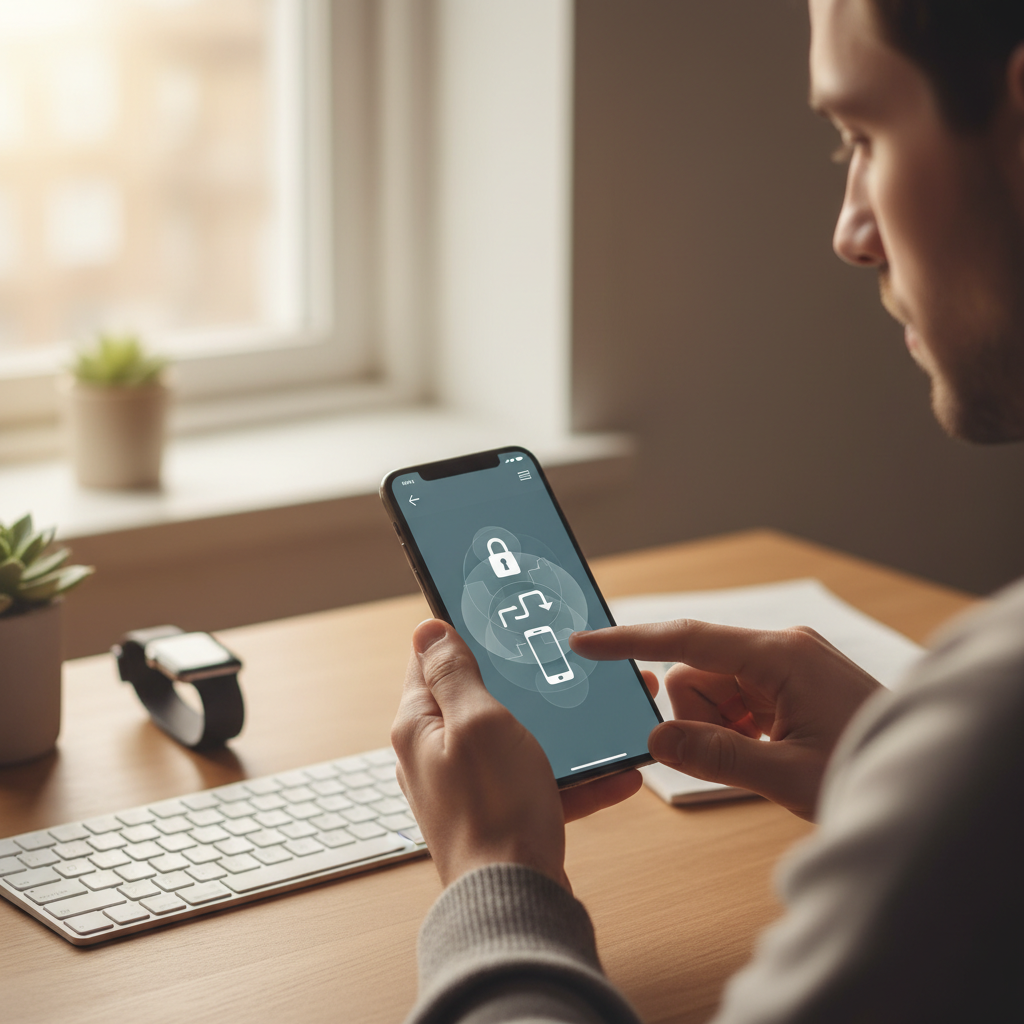
Table of Contents
Introduction
In today’s digital age, where nearly every aspect of our lives is intertwined with online accounts, the question arises: how secure is your personal information? With the increasing sophistication of cyberattacks, relying solely on passwords is no longer enough to protect your sensitive data. Two-factor authentication (2FA) has become a vital security measure that offers an extra layer of defense, making it significantly harder for unauthorized users to gain access to your accounts. Are you ready to take the crucial step towards safeguarding your digital life?
The rise in cybercrime statistics paints a daunting picture. According to recent reports, millions of online accounts are compromised each year due to weak password protection or phishing attacks. Hackers use advanced techniques to bypass simple password protections, sometimes gaining access through stolen passwords obtained from data breaches. Imagine the consequences of an attacker accessing your email, bank, or social media accounts. The damage could range from financial loss to identity theft and severe privacy violations. This vulnerability has made two-factor authentication not just a recommended practice but a necessary one.
Two-factor authentication functions by requiring users to provide two different forms of identification before granting access to an account. Unlike traditional single-factor authentication, which typically relies on something you know (like a password), 2FA adds an extra step by asking for something you have—such as a mobile device with an authenticator app—or something you are, like biometric verification. This additional verification drastically decreases the likelihood of unauthorized entry, because gaining access now requires more than just your password, adding a robust layer of security that protects you against threats.
As cyber threats continue to evolve frequently, it’s understandable if you feel overwhelmed about securing your online presence. Many people are concerned about the complexity of setting up security tools or worry about the inconvenience of additional login steps. However, the peace of mind 2FA brings far outweighs these initial efforts. For those new to securing online accounts, it’s helpful to first understand how to create strong passwords, which lays a critical foundation complementary to 2FA. You can find more on this topic at how to create strong passwords.
Taking charge of your online security means not only protecting your personal data but also ensuring your digital identity remains yours alone. Many cyberattacks target individuals unaware of the simplest yet powerful security measures available to them. Setting up two-factor authentication is one of the smartest steps you can take toward reducing risks and boosting your online defenses. Whether you are securing your email, financial accounts, or social media profiles, implementing 2FA reduces the chances of falling victim to account takeover.
What You’ll Learn in This Guide
This comprehensive guide is designed to walk you through every essential aspect of two-factor authentication. Whether you’re a beginner or looking to deepen your understanding, you will find clear explanations and practical steps to take control of your cybersecurity.
- Understanding Two-Factor Authentication: Learn exactly what 2FA is, how it works, and why it is critical in today’s digital security landscape. This section breaks down complex concepts into easy-to-understand terms so you can confidently apply what you learn.
- Types of Two-Factor Authentication: Explore the various types of 2FA methods including SMS codes, authenticator apps, hardware tokens, and biometric verification. You’ll understand their differences, benefits, and which options might suit your needs best.
- Step-by-Step Setup Guides: Get detailed instructions on how to enable two-factor authentication on popular platforms such as Google Accounts, Apple ID, and major social media networks. Follow along to secure your most important online services easily.
- Troubleshooting and Best Practices: Discover how to handle common issues such as losing access to your 2FA device or codes, using backup codes safely, and contacting support when needed. Learn tips to maintain seamless and strong protection without frustration.
Moving forward, this article will comprehensively cover each of these areas to ensure you leave empowered to protect your digital footprint effectively. We will unravel the details of setting up different types of two-factor authentication and explain the benefits so that security becomes a seamless part of your online interactions.
By the end of this guide, you’ll have a clear understanding of not only why 2FA matters but also how to implement it with confidence. We’ll provide you practical insights and clear pathways to make the process straightforward, no matter your level of technical expertise.
Secure your accounts today and join millions who are proactively protecting themselves against the growing threats of cybercrime. Let’s embark on this journey to digital security together and learn how simple steps like setting up two-factor authentication can create a safer online environment for you and your loved ones.

As we move beyond understanding the basics and importance of two-factor authentication (2FA), it’s essential to delve deeper into its practical implementation and troubleshooting. Two-factor authentication significantly strengthens account security by requiring users to present a second form of verification in addition to their password, thereby reducing the risk of unauthorized access. This discussion will explore the detailed steps to set up 2FA on various popular platforms, addressing real-world scenarios and challenges users face in adopting this crucial security measure. Additionally, common issues and effective solutions will be discussed to ensure users can maintain continuous access and maximize protection for their accounts.
How to Set Up Two-Factor Authentication on Popular Platforms
Implementing two-factor authentication across your key online accounts is a vital step toward securing your digital identity. While the concept of 2FA is straightforward—adding an extra verification step—a practical setup often varies by platform, ranging from Google accounts to social media profiles like Facebook and Instagram. Taking the time to understand these platform-specific processes helps avoid confusion and empowers you to confidently enhance your security posture. For beginners, following step-by-step instructions can make the transition to 2FA seamless and effective.
Setting up 2FA typically involves accessing the security settings of your account, choosing a preferred verification method such as SMS codes or authenticator apps, and confirming your setup with a security code. Many platforms now also support biometric verification or hardware tokens for an additional layer of convenience and security. Learning how to activate 2FA on multiple platforms not only broadens your personal security but also raises your awareness of the different technologies available to safeguard your information.
Setting Up Two-Factor Authentication: Key Steps
Here are the general steps to follow when enabling 2FA on various popular platforms, providing a foundation for specific instructions:
- Access Security Settings: Locate the security or privacy section within your account settings. This is where 2FA options are most commonly found.
- Select 2FA Method: Choose between SMS/text codes, authenticator apps like Google Authenticator or Authy, or hardware tokens. Each method has pros and cons related to convenience, security, and device dependency.
- Link Your Device or Number: Enter your phone number or scan a QR code to link an authenticator app. This establishes the communication channel for verification codes.
- Verify Setup: Confirm your 2FA setup by entering a code sent to your device or generated by your app. This step ensures your device is properly linked and ready for authentication.
Troubleshooting Common Two-Factor Authentication Issues
While 2FA provides enhanced security, users sometimes face challenges that can hinder access or complicate authentication. It’s important to prepare for such scenarios by understanding troubleshooting methods and recovery options. Losing access to your 2FA device, encountering syncing problems with authenticator apps, or facing locked accounts can be stressful but are manageable with the right steps. Proactively generating backup codes and knowing when to contact support are essential parts of maintaining your security without sacrificing accessibility.
Many online platforms provide specific guidance for resolving common 2FA problems, making the process less intimidating. By familiarizing yourself with these troubleshooting solutions ahead of time, you can ensure continuous access to your accounts even during unexpected difficulties. Moreover, understanding backup and recovery options helps mitigate risks associated with device loss or technical errors, reaffirming that 2FA enhances security without creating cumbersome obstacles.
Important Considerations for Managing 2FA Issues
Consider these practical strategies to handle typical two-factor authentication challenges effectively:
- Generate and Safely Store Backup Codes: Backup codes serve as a fail-safe when your primary 2FA method is unavailable. Generate these codes from your account security settings and keep them in a secure place, such as a password manager or physical safe, to prevent lockouts.
- Resolve Authenticator App Problems: Syncing issues or app malfunctions can disrupt code generation. Regularly update your authenticator app, ensure your device’s time settings are accurate, and reinstall the app if necessary to maintain smooth operation.
- Contact Support When Locked Out: If all else fails and you cannot access your account, promptly reach out to the platform’s customer support. Provide necessary identity verification to regain access and reset 2FA settings securely.
- Keep Your Contact Information Updated: Verify that your phone number and email address linked to the 2FA process are current. Outdated information can prevent critical verification messages from reaching you during login attempts.

Conclusion
In summary, two-factor authentication (2FA) represents a crucial advancement in digital security, providing an essential extra layer beyond conventional passwords. By requiring a secondary form of verification—whether through SMS codes, authenticator apps, hardware tokens, or biometric methods—2FA significantly reduces the risk of unauthorized account access. This enhanced security measure is increasingly important in an era where cyberattacks grow more sophisticated and pervasive. Implementing 2FA means that even if your password is compromised, malicious actors face an additional barrier that is often difficult or impossible to bypass, safeguarding your sensitive information from hackers and attackers.
Throughout this guide, we explored the different types of two-factor authentication available and their varying levels of convenience and security. Whether you prefer the immediacy of SMS codes or the stronger protection of hardware tokens and biometric verification, choosing a 2FA method suited to your needs can dramatically elevate your account safety. We also covered practical, step-by-step instructions on how to set up 2FA across some of the most commonly used platforms—including Google accounts, Apple ID, and popular social media services like Facebook and Instagram. These straightforward setup processes make enabling 2FA accessible for users of all technical backgrounds, empowering you to take decisive action towards securing your digital identity.
Moreover, this guide addressed common troubleshooting scenarios, such as losing access to your authentication device or codes. Generating and securely storing backup codes ensures you’ll maintain entry to your accounts even in case of device loss or replacement. Understanding how to recover or reset your 2FA settings, and knowing when to contact support, prepares you effectively for potential complications and helps maintain seamless protection. These best practices prevent frustration and ensure that two-factor authentication remains a reliable, consistent safeguard rather than a source of confusion.
To make the most of what you’ve learned, the next step is to take immediate action by enabling two-factor authentication on your most critical accounts—starting with your email, financial services, and social media platforms. Be sure to select the 2FA method that balances security with ease of use for you personally, and don’t forget to save backup codes in a safe location. Regularly review your security settings, especially after device changes or phone number updates, to ensure your protections stay current. Taking these steps puts you firmly in control of your cybersecurity, drastically lowering your risk of falling victim to account breaches and identity theft.
Ultimately, implementing two-factor authentication is one of the simplest yet most effective ways to fortify your online presence. As cyber threats continue to evolve, proactively safeguarding your accounts with 2FA not only protects your personal information but also contributes to the overall security of the digital ecosystem. We encourage you to embrace these security measures today and inspire others to do the same. Your commitment to stronger authentication helps create a safer internet for everyone. If you found this guide helpful, continue learning about related cybersecurity best practices to stay informed and prepared in our ever-changing digital world.
